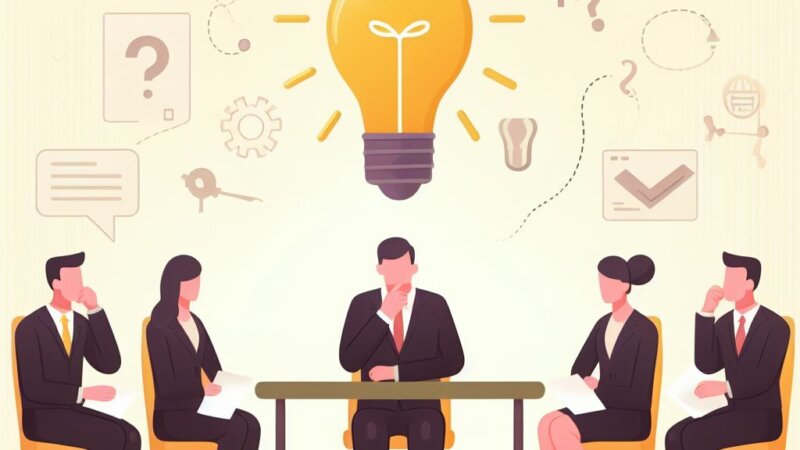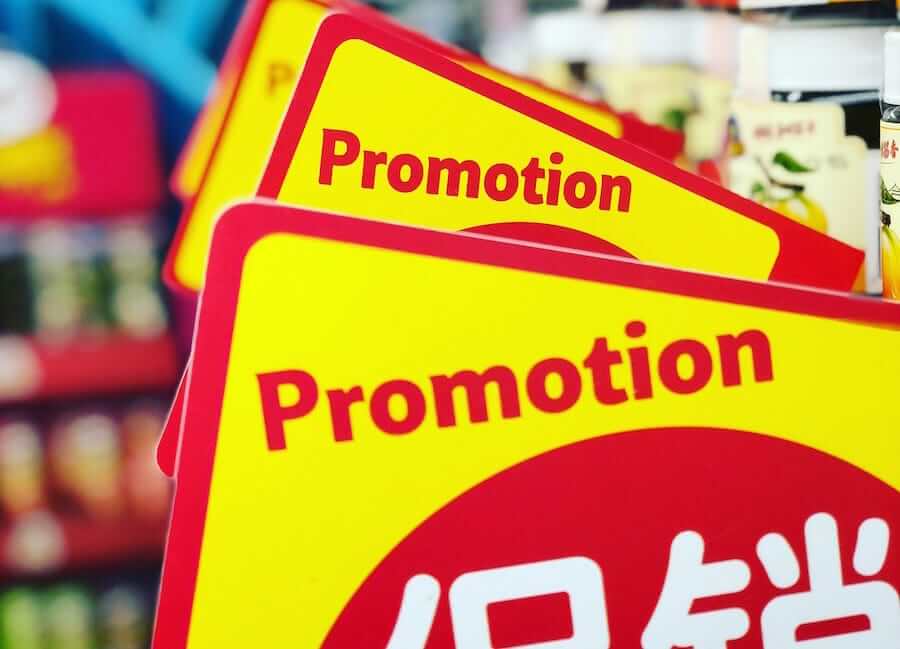
How to Guides, Lessons By Leaders
6 Awesome Questions You Need To Be Asking During A Job Interview
September 12, 2023
Have an interview coming up and not sure what questions to ask? Here are 6 that will be sure to make you stand out.
Learn More
The lifeblood of many consumer brands is the tried and tested marketing promotion. Every time you walk into a fast food store, something is on special – either discounted or valued added in order to make you spend or spend more.
During my years working at Lion Nathan (now just Lion), we had a new ‘sales deck’ every month. It was essentially just a large block of powerpoint slides showing the sales teams and customers what specials were available in the coming month. With the raft of brands that Lion Nathan owned at the time, sometimes that sales deck would run to over a hundred slides.
Suffice to say, we often felt guilty about the consumption of paper needed to print these out.
Most of these promotions were running a familiar pattern, as most alcohol promotions tended to do. And still do. Alcohol purchases for many people are often price-driven; many consumers have a range of products they like and will gravitate to the cheapest within the group they like.
However, promotions are still incredibly useful tools in order to generate awareness for your products. Managed properly, they can create new customers and new sales. Used badly, they can end up costing you marketing budget for no return, or they can hammer your profit margins.
With that caveat in mind, I’ve compartmentalised promotions into a five-step process that you can use to build a plan for your company or brand. These don’t necessarily need to be done in this order. In fact, it would make more sense in most cases to focus on the product in the first instance.
Before I dive into the five steps, just bear this example in mind:
Theoretically, both cost the retailer the same – $500 – although the travel agent in question can probably get the hotel upgrade for a lot less than $500.
The first is an example of a ‘value add’ promotion; the second is an example of a discount promotion. Think about these questions moving forward: which one of these promotional offers is more likely to attract you to make a purchase, and which one is more likely to damage a brand in the long run?
The list of mechanisms for features is long. I’ve included a few examples below:
Each mechanism has their own pros and cons, and there are subtle psychological differences as to how the consumer reacts to each offer.
For example, in mechanism (1), whilst this seems a tempting concept to drive sales, the long-term consequences can have a profound impact depending on the normal price of X. Once the promotion is over, how will the consumers react to the fact that X has, in their mind, doubled in price? Will they continue to purchase X at ‘full’ price?
Worse still, is there now a sub-conscious awareness in that consumer’s mind about the profit margin involved in that product that was allowing the company to give two away for the price of one? Do they feel ripped off? Perhaps in times gone past the answer was ‘no’ but today the consumer is much more aware of what constitutes a ‘fair’ price and will often search high and low to find that price.
Another one to tackle is (4) – where the prize itself can very much trigger a good or bad response from the consumer. Too cheap and they’ll ignore the promotion completely. Too expensive and they’ll deem their likelihood of winning said draw to be such long odds that they won’t respond.
So all these mechanisms can produce different results and different ongoing responses from consumers. Just look at the image below and have a think about how you feel about it.
You’d feel a bit of an idiot if you’d bought the item last week at full price wouldn’t you? How would your loyalty be to the brand then?
A Tripwire is a lower, entry-level priced product to a potential customer (not an established one) to get them into your ecosystem. Oculus did this with their flagship product ‘Rift VR’. To get customers into the VR ecosystem, they offered the Samsung compatible ‘Gear VR’ for just $99. This was to then encourage them to make the upgrade at a later date to the more expensive Rift at $599.
Another idea for a Tripwire is time; making your prospect customer come into your business for a review. Now you have them in your database and you can upsell to them at a later date. My wife did this recently with a make-up less from Napoleon. Not only is she now in their sales system, but the ‘freebie’ produced a loyal customer.
We touched on the offer above but this is where we have to get much more granular about what we’re giving away. The mechanism just gives us a device; the offer now fleshes that device out.
So let’s say we’ve settled on mechanism (3). We’re going to ask customers to buy one product and we’re going to give them a second product for a discounted price. Now we have to fill in the blanks. What should X be, what should Y be and what should Z be?
On the surface, that might seem pretty easy but again, the psychology of the consumer plays an important part in working out what these values should be. If the new value of Y (compared to when it isn’t bought with X) isn’t distinct enough, will that trigger enough people purchasing the deal? Is a 10% discount for Y enough? Is 25%? Does 25% leave you, as the seller, with enough profit in the deal to make it worthwhile?
More importantly, is Y a product that people will repeat purchase if they like it enough? A 25% discount may seem tempting in the first instance but we’re left with the problem we spoke about earlier – will this make the consumer resent paying full-price later on?
None of these challenges even addresses the question as to whether X is even a product that the consumer buys on a regular basis. If it isn’t, the uptake for the deal is hardly going to increase significantly if the original trigger is something that isn’t a frequently purchased product.
Our next step is to decide on the medium for the promotion. Of all the steps, this probably the easiest to tackle. If you’re running a typical B2C business, you have the option of running the promotion, in-store, online, via phone sales, catalogue or any one of the normal channels you might operate on.
Some businesses with multiple sales channels sometimes decide to offer deals across all or just one of those channels. For example, ‘in store only’ is commonplace these days as bricks and mortar retailers fight back against ‘online only’ traders. The goal is to drive more foot traffic and then upsell better or more products once they arrive in the shop.
There’s also the potential that the medium for ENTRY for the promotion could be in one particular – i.e. in example (4). You could want to drive people to a website online post-purchase to enter a competition.
This is the cornerstone of any promotion. In the past, I’ve seen so many people punting promotions on products that the consumer didn’t want in the first instance, and they think that discounting will solve an issue. Most of the time, that’s a big mistake.
That said, there’s a time and place for selling ‘excess stock’. But ask yourself – are your loyal customers, those that will return time and again and recommend you to their friends, be impressed with a deep discount on a product they’ve passed over numerous times before?
The product selection is important when you’re mixing and matching across brands or categories. Offering a multi-buy on toilet paper makes sense to people with large families; but offering them a discount on a luxury chocolate product if they buy that toilet paper makes much less sense.
Once again the psychology of the entire promotion needs to be examined here. Constant discounting or promotion on a high profit item makes little sense. It’s a high profit product for a reason: to make high profits.
The next step with a promotion is to determine both the length of time it will run for and when it will run. There’s also often a need to add a level of scarcity into the promotion too – will the offer expire once a certain number of the deals have been redeemed? Or will it continue running for a set-time without an exhaustive redemption?
A promotion could run for one hour, one day, one week or a whole month. The longer it runs the more likely it will start to feel ‘tired’ but depending on how ofter your customers engage with your business, you might need this length of time to reach a broad marketplace. A short, one hour promotion could breed exclusiveness, fun and more immediate purchases, but at the same time, a lot of people could miss out on the opportunity with such a short time-frame.
One of the big mistakes I’ve seen over the years came from a brand called ‘Rivers‘ in Australia who frequently ran promotions with the tagline saying ‘your local store may have plenty or none’. This was supposed to create a sense of urgency around the promotion – consumers had to visit the stores quickly otherwise they’d risk missing out on buying the ‘bargains’ on offer.
Of course, that was what the convoluted advertising psychology around the messaging suggested. The result, given River’s demise (see below), was that the consumer wasn’t that stupid. Or they were that stupid and, given the average quality of the products, just didn’t care. After all, a similar product might be available at K-Mart or Target, at a similar price and probably stocked high to the ceiling.
Scarcity tends to only work if the product fits into a ‘must-have’ category. A cheap pair of board shorts isn’t a ‘must-have’ by any stretch of the imagination.
All promotions have a psychological impact. Think about Harvey Norman and your average Apple Store. When was the last time you got a discount or any form of value add in an Apple store? Probably never, but if you paid full price in Harvey Norman, you’d probably feel ripped off.
The cycle of discounts is very, very hard to get out of. And can eventually kill your business. There’s dozens of examples of that in the Australian retail landscape. Payless Shoes, Dick Smith and Rivers.
But also shying from promotions whilst not doing anything (or doing the right things) to build your brand offering can lead to disaster. Oroton found that out the hard way late in 2017.
Or you can just get everything wrong, like Masters.
Sure, poor promotional strategy may not be the main reason of the demise of many of these businesses but it certainly can’t have helped them in the long run.
Infusionsoft have a great list of promotions and the reason behind them here. They’ve also included the ‘Tripwire’ concept I discussed earlier.
A promotion shouldn’t be put together slap-dash; some real thought can offer huge upsides to company growth. Worse case scenario is a badly executed promotion – a simple but heavy price cut – can lead into a continued spiral of more and more discounting, eroding brand value and profit margins at the same time.
Part two of this blog, which will follow soon, will look at how to implement promotions in a B2B environment.
Photo by Heidi Sandstrom. on Unsplash

How to Guides, Lessons By Leaders
Have an interview coming up and not sure what questions to ask? Here are 6 that will be sure to make you stand out.
Learn More
Personal Development
There are two words that could be used to describe me with no arguments from myself - distractible and unproductive.
Learn More
MarTech
One of the huge growth areas in digital marketing in the past 10 years has been MarTech.
Learn More